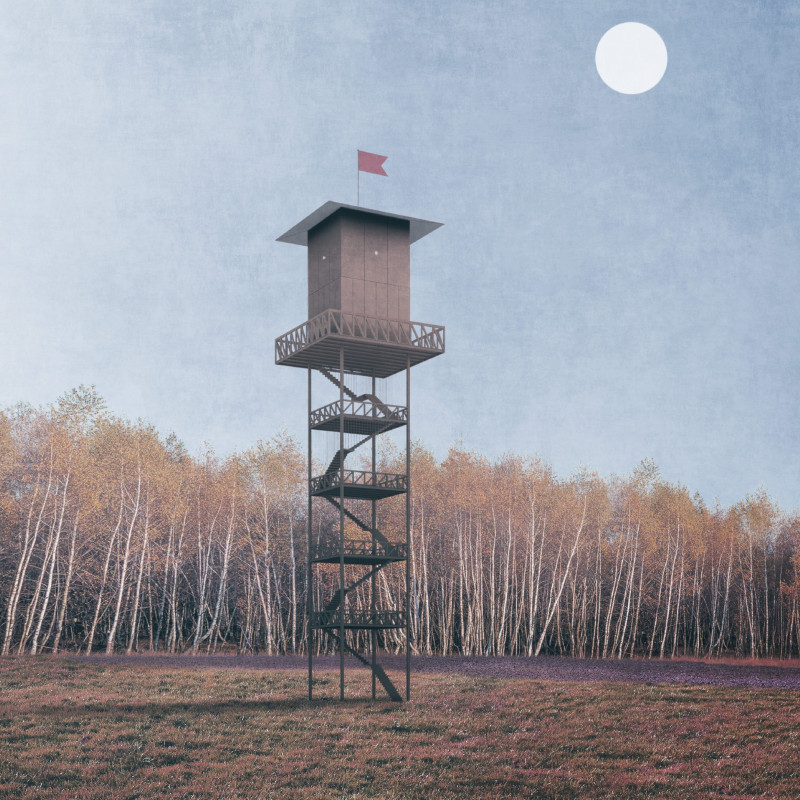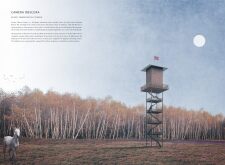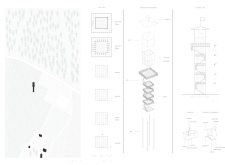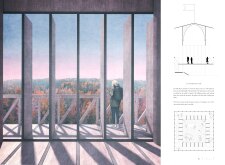5 key facts about this project
The tower consists of five levels, culminating in a top-floor glazed viewing room designed to maximize visibility and light exposure. The extensive use of glass facilitates expansive views, while wooden shutter panels allow visitors to control light and create an immersive camera obscura experience when closed. A spiral staircase connects the various levels, enhancing accessibility and contributing to the vertical design.
Design Innovations and Interactive Features
What distinguishes the Camera Obscura Project from standard observation towers is its innovative integration of art and nature. The use of wooden shutter panels provides a dual experience: a typical observation deck and a dynamic visual projection space. These elements encourage visitors to engage with their surroundings in a contemplative manner, unlike conventional viewing platforms which primarily offer static perspectives.
The ability to create a camera obscura effect fosters an environment where visitors can witness the world outside projected onto the interior walls, establishing a unique interaction between the viewer and the landscape. This approach not only elevates the aesthetic experience but also serves educational purposes, allowing for discussions around optics, nature, and art.
Architectural Materials and Structural Details
The architectural materials employed in the Camera Obscura Project play a significant role in both its function and visual appeal. Glass is utilized predominantly for the viewing areas, ensuring unobstructed visibility while promoting natural light inclusion. The presence of wood in the shutter panels and flooring introduces warmth and a tactile quality, aligning with the natural textures of the surrounding environment.
Steel is used in the structural framework, providing essential support and durability to the tower. These materials have been chosen not only for their performance characteristics but also for their ability to harmonize with the local context. This careful selection enhances the architectural integrity while ensuring long-term sustainability.
For a deeper understanding of the design, visitors are encouraged to explore the architectural plans, sections, and additional design ideas presented in detail. By examining these elements, one can gain further insights into the architectural strategies employed in the Camera Obscura Project and appreciate its contribution to contemporary architecture.


























